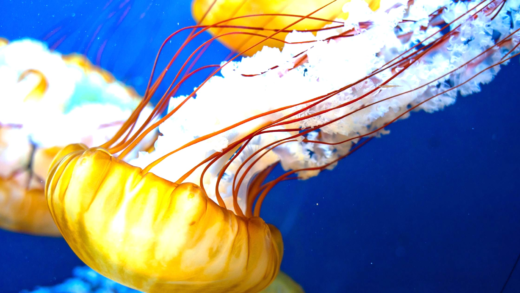Glaciers are vital for ecosystems and freshwater supplies, but climate change is causing their rapid decline. This article explores glacier formation, types, movement, and their ecological significance, emphasizing the need for monitoring and understanding their role in the environment.
How Glaciers Form
Glaciers are massive, slow-moving bodies of ice that form through a process called glacier formation. This process begins with snowfall. When snow accumulates over time, it compresses under its own weight. As layers of snow build up, the lower layers transform into firn (a granular type of snow) and eventually into glacial ice. This transformation occurs due to the pressure exerted by the upper layers, which causes the air to escape and the snow to compact.
Several key factors influence how glaciers form:
- Temperature: Colder climates are crucial for glacier formation, as temperatures need to remain low enough for snow to persist.
- Precipitation: High snowfall is necessary for the accumulation of snow layers.
- Topography: Mountains and high-altitude areas are ideal locations for glaciers due to their favorable conditions.
Understanding the formation of glaciers is essential, as it sets the foundation for grasping their movement and ecological significance.
Types of Glaciers
There are several types of glaciers, each defined by their location and characteristics. The main categories are:
- Alpine Glaciers: These glaciers form in mountain ranges and flow down valleys. They are typically smaller and more dynamic.
- Continental Glaciers: These are massive ice sheets that cover vast areas, like Greenland and Antarctica. They can reach several kilometers in thickness.
- Outlet Glaciers: These glaciers flow out from larger ice sheets into the ocean.
Learning about the various types of glaciers is important because each type plays a unique role in the environment and contributes differently to global freshwater supplies.
The Composition of Glaciers
The composition of glaciers primarily consists of ice, but they also contain air bubbles, sediments, and various minerals. As glaciers age, they undergo changes in structure:
- Ice Crystals: Initially, the ice crystals are small and irregular. Over time, they grow larger and more organized.
- Air Bubbles: Trapped air bubbles provide valuable information about past atmospheric conditions.
- Debris: Glaciers often carry sediments, which can impact the landscapes they flow through.
Understanding the physical makeup of glaciers helps scientists assess their health and predict future changes due to climate shifts.
How Glaciers Move
Glacier movement is a fascinating process driven mainly by gravity. The movement occurs in several ways:
- Basal Sliding: The glacier slides over the bedrock due to meltwater acting as a lubricant.
- Internal Deformation: This involves the ice flowing and deforming internally, allowing it to move even on gentle slopes.
- Surge: Some glaciers experience rapid movement, known as a surge, which can dramatically reshape landscapes.
Understanding the dynamics of glacier movement is crucial for predicting how they will respond to environmental changes, particularly in the context of climate change.
Glaciers and Freshwater Supply
Glaciers are critical sources of freshwater, holding approximately 68.7% of the Earth’s freshwater supply. This makes them essential for ecosystems and human populations. When glaciers melt, they release freshwater into rivers and lakes, supporting both wildlife and agricultural activities.
The role of glaciers in providing freshwater can be summarized as follows:
- Natural Reservoirs: Glaciers act as natural reservoirs, storing water during colder months and releasing it during warmer seasons.
- Water Quality: Meltwater is often of high quality, free from pollutants that can affect surface water sources.
- Habitat Support: Many species rely on glacier-fed rivers for their habitat, making glaciers vital for biodiversity.
Understanding the importance of glaciers for freshwater resources is crucial, especially as climate change threatens their stability and the ecosystems that depend on them.
Percentage of Freshwater in Glaciers
As mentioned, glaciers store about 68.7% of the Earth’s freshwater, which is an astonishing figure. This percentage highlights their significance in the global water cycle. To put this into perspective:
- Global Freshwater Distribution: Only about 2.5% of the Earth’s water is freshwater, and glaciers hold a substantial portion of that.
- Impact of Glacial Melt: As glaciers retreat due to rising temperatures, the percentage of freshwater available decreases, potentially leading to water shortages.
Learning about the significance of glacier-stored freshwater is essential for understanding the impacts of climate change on global water resources.
Impact on Landscape
Glaciers have a profound impact on the landscapes they traverse. Their movement carves out valleys, shapes mountains, and creates distinctive geographical features. Some of the key ways glaciers affect the landscape include:
- U-Shaped Valleys: As glaciers flow, they erode the valley walls, creating U-shaped valleys that are characteristic of glacial regions.
- Moraines: Glacial deposits, known as moraines, accumulate debris and sediment, which can form ridges and hills.
- Glacial Lakes: Melting glaciers often leave behind depressions that fill with water, forming glacial lakes.
Learning about glaciers’ effects on the environment is essential for appreciating their role in shaping our planet and understanding the consequences of their retreat.
Effects of Climate Change on Glaciers
Climate change is significantly impacting glaciers around the world, leading to accelerated melting and retreat. As temperatures rise, glaciers are becoming thinner and smaller. This process can be attributed to several factors:
- Increased Temperatures: Global warming has raised average temperatures, causing more ice to melt than accumulate.
- Altered Precipitation Patterns: Changes in precipitation can result in less snowfall, further reducing glacier mass.
- Feedback Loops: Melting glaciers expose darker land, which absorbs more heat, leading to further warming.
Understanding the consequences of climate change on glaciers is crucial, as their decline affects freshwater supplies and global sea levels. For instance, the melting of the Greenland and Antarctic ice sheets contributes significantly to rising sea levels, threatening coastal communities.
Monitoring Glaciers
Studying glaciers involves various scientific methods to measure and monitor changes over time. Scientists use a combination of techniques to gather data, including:
- Satellite Imagery: Remote sensing technology provides detailed images of glacier movement and mass loss.
- Ground-Based Measurements: Researchers deploy GPS and laser systems to track glacier thickness and flow.
- Ice Core Sampling: Drilling into glaciers allows scientists to analyze trapped air bubbles, providing insights into historical climate conditions.
Understanding how scientists study glaciers is vital for tracking their changes and predicting future scenarios, particularly in the context of climate change.
Glaciers and Ecosystems
Glaciers play a critical role in various ecosystems and human populations. They support biodiversity and provide essential resources. The importance of glaciers can be summarized as follows:
- Freshwater Sources: Glaciers are vital for maintaining rivers and lakes, especially during dry seasons when meltwater is released.
- Biodiversity Hotspots: Many species rely on glacier-fed ecosystems for survival, as these areas provide unique habitats.
- Cultural Significance: Indigenous communities often depend on glacier-fed rivers for their livelihoods and cultural practices.
Understanding the broader ecological role of glaciers emphasizes the need for their protection, especially as climate change continues to threaten these critical natural resources.





Comments are closed.